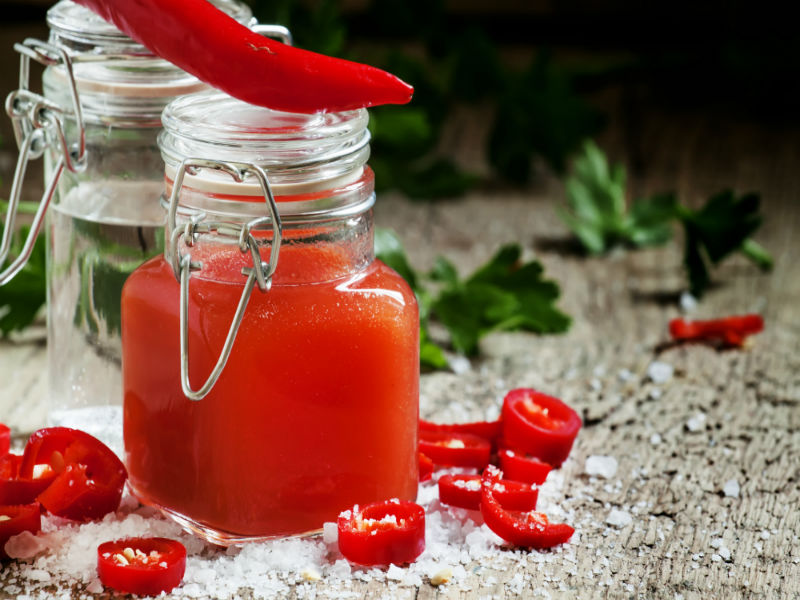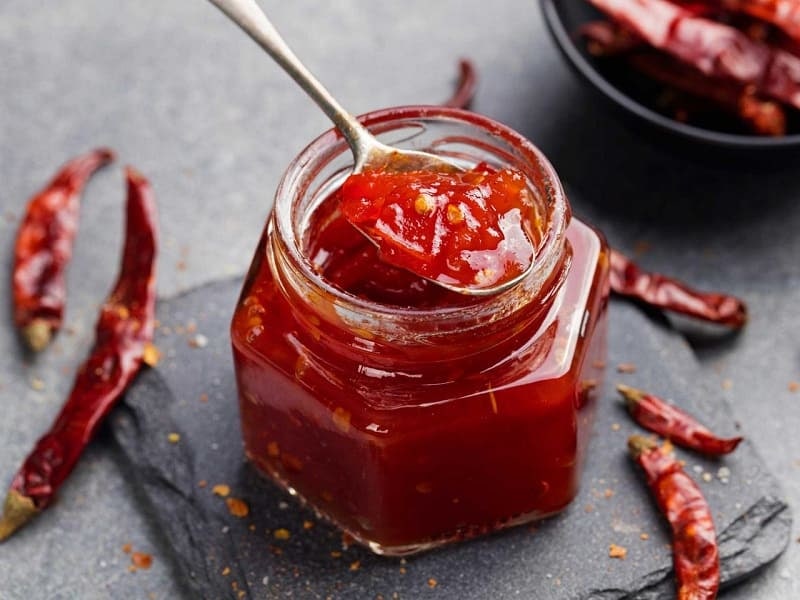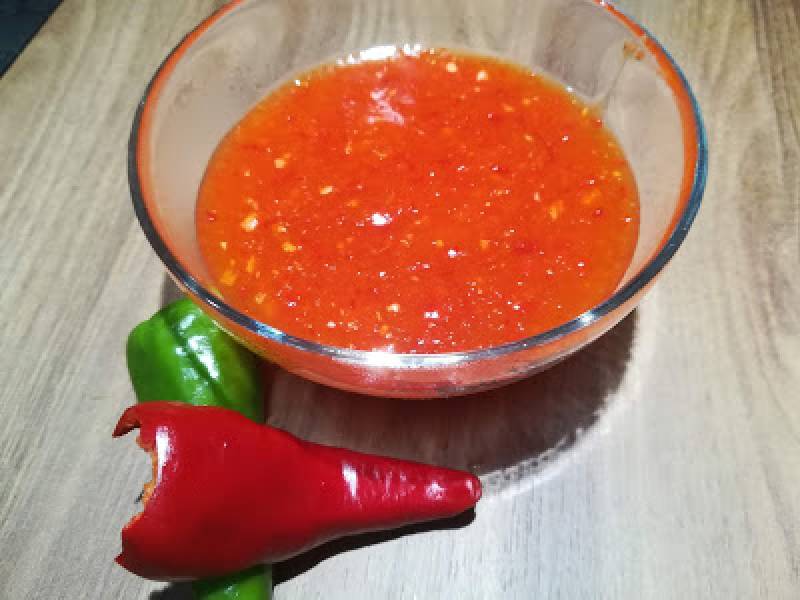A Guide to Chili Sauce Types and Varieties
Chili sauce is a popular condiment enjoyed by people all over the world, adding a spicy and flavorful kick to various dishes. With its wide range of heat levels, flavors, and textures, choosing the right chili sauce can enhance the taste of your food. In this guide, we will explore different types and varieties of chili sauce, from classic options to unique and exotic creations.
1. Sriracha sauce: Sriracha is a famous chili sauce originating from Thailand. Made from red chili peppers, vinegar, garlic, sugar, and salt, Sriracha is known for its smooth and slightly sweet heat. It is a versatile sauce that pairs well with Asian cuisine, burgers, sandwiches, and even as a dip for snacks.
2. Tabasco sauce: Tabasco sauce is a Louisiana-style hot sauce that has gained worldwide popularity. Made from tabasco peppers, vinegar, and salt, it offers a tangy and fiery flavor. Tabasco sauce is often used as a table condiment for adding heat to dishes such as eggs, seafood, and Mexican cuisine.
3. Frank’s RedHot sauce: Frank’s RedHot sauce is another classic hot sauce, known for its rich flavor and moderate heat. Made from cayenne peppers, vinegar, garlic, and various spices, it is often used in Buffalo wings, chili, and as a seasoning for meat and vegetables.
4. Mexican hot sauce: Meant for those who enjoy intense heat, Mexican hot sauces are fiery and vibrant. These sauces are often made with a variety of chili peppers, including habanero, serrano, and jalapeno, along with other ingredients like vinegar, tomatoes, and spices. Mexican hot sauces are perfect for adding a kick to tacos, burritos, and other Mexican dishes.
5. Asian chili oil: Asian chili oil is a combination of chili peppers and oil infused with other flavors like garlic, ginger, and spices. It offers a unique and aromatic heat to dishes such as noodles, stir-fries, dumplings, and soups. Asian chili oil is also used as a finishing touch for added flavor and spice.
6. Harissa sauce: Harissa is a North African chili sauce made from a combination of roasted red chili peppers, garlic, spices, and herbs such as coriander and caraway. It has a smoky, earthy flavor and a moderate level of heat. Harissa sauce is commonly used in dishes like couscous, tagines, and grilled meats.

7. Korean gochujang: Gochujang is a fermented chili paste that is a staple of Korean cuisine. Made from red chili peppers, rice or barley, soybeans, and salt, it offers a unique balance of sweetness, tanginess, and heat. Gochujang is used in various Korean dishes such as bibimbap, bulgogi, and kimchi.
8. Peri-Peri sauce: Originating from Southern Africa, peri-peri sauce is a fiery chili sauce made from African bird’s eye chili peppers, garlic, citrus juice, and spices. It delivers a hot and tangy flavor. Peri-peri sauce is commonly used in Portuguese and African cuisines, particularly in dishes like grilled chicken and seafood.
9. Sambal sauce: Sambal is a Southeast Asian chili sauce that comes in various forms and flavors. It is typically made with chili peppers, onions, garlic, shrimp paste, and spices. Sambal sauce has a spicy, sweet, and savory taste and complements dishes like rice, noodles, curries, and satays.
10. Louisiana-style hot sauce: The Louisiana-style hot sauce is a spicy, vinegar-based chili sauce that originated in the Southern United States. Made from cayenne peppers, vinegar, salt, and other spices, it offers a tangy and moderately hot flavor. This sauce is commonly used in Cajun and Creole dishes, seafood boils, and as a condiment for fried chicken.
These are just a few examples of the wide variety of chili sauce types and varieties available in the culinary world. Whether you prefer a mild, tangy sauce or a spicy and intense one, there is a chili sauce out there to suit your taste buds. So, go ahead and explore the vast world of chili sauces and bring some extra heat to your next meal!Exploring the Business of Chili Sauce: From Production to Marketing
Introduction:
Chili sauce is not only a popular condiment enjoyed by food enthusiasts, but it is also a thriving industry with a wide range of opportunities. From the production of chili sauces to the marketing and distribution of these products, the business of chili sauce presents exciting opportunities for entrepreneurs and food enthusiasts alike. In this article, we will delve into the various aspects of the chili sauce industry, from sourcing ingredients to packaging and marketing strategies.
1. Sourcing Quality Ingredients:
To produce high-quality chili sauce, it is essential to source fresh and flavorful ingredients. Chili peppers, being the main component, must be carefully selected for their heat level, flavor profile, and consistency. Farmers and growers play a vital role in ensuring a steady supply of quality peppers, and establishing strong relationships with them is crucial for business success. Additionally, other ingredients like vinegar, salt, garlic, and spices must also be sourced from reliable suppliers to maintain consistent taste and quality.

2. Production Process:
The production process of chili sauce involves several key steps, including cleaning, chopping, cooking, blending, and bottling. A well-designed production facility equipped with the necessary machinery and equipment is essential for an efficient and scalable operation. Hygiene and food safety standards should be followed to ensure product quality. Some chili sauce manufacturers also choose to incorporate traditional production methods to enhance flavors and differentiate their products.
3. Recipe Development and Innovation:
To stand out in the competitive chili sauce market, recipe development and innovation play a crucial role. Creating unique flavors, experimenting with different chili pepper varieties, and incorporating complementary ingredients can help differentiate a brand from its competitors. Continuous research and development efforts can lead to the creation of new and exciting chili sauce flavors that cater to ever-evolving consumer preferences.
4. Packaging and Labeling:
Packaging plays a vital role in attracting customers and enhancing brand recognition. Eye-catching labels, well-designed bottles, and convenient packaging sizes can make a significant impact on consumer purchasing decisions. Clear and informative labeling is also essential, providing details on ingredients, nutritional information, and even recipe suggestions. Additionally, environmentally friendly packaging options, such as recycled materials or biodegradable containers, can align a brand with eco-conscious consumers.
5. Branding and Marketing Strategies:
Building a recognized brand in the chili sauce industry requires effective marketing strategies. Developing a brand identity with a distinct logo, colors, and packaging design is crucial for establishing a strong presence. Engaging in digital marketing techniques such as social media campaigns, influencer partnerships, and online advertising can help reach a wider audience. Participating in food events, farmers markets, and partnering with local restaurants can also create brand visibility and generate word-of-mouth publicity.
6. Distribution Channels:

To ensure maximum reach and availability of chili sauces, establishing a strong distribution network is vital. This can include partnerships with distributors, wholesalers, and retailers such as supermarkets and specialty food stores. Building relationships with restaurant chains and foodservice providers can also open doors for larger-scale distribution. Additionally, e-commerce platforms and direct-to-consumer sales can reach a broader customer base, especially those looking for unique or specialty chili sauce products.
7. Targeting Niche Markets:
While mass-market appeal is essential for scaling a chili sauce business, targeting specific niche markets can open up lucrative opportunities. This can involve developing chili sauces tailored to specific dietary preferences like vegan, gluten-free, or organic. Niche markets can also include customers seeking chili sauces with unique flavors or regional specialties, allowing businesses to tap into specific cuisine trends and cultural preferences.
8. Collaborations and Partnerships:
Collaborations with other food brands, local producers, or celebrity chefs can elevate a chili sauce brand’s visibility and credibility. Joint product launches, co-branding opportunities, and recipe collaborations can attract new customers and expand market reach. Partnerships can also take the form of aligning with upscale restaurants or gourmet food retailers, further positioning the chili sauce brand as a premium product.
9. Export Opportunities:
The chili sauce industry presents significant export potential, with consumers worldwide developing a taste for spicy flavors. Exploring opportunities to export chili sauces to different countries and regions can be a lucrative venture. However, businesses must consider factors such as compliance with local regulations, packaging requirements, and market research to identify potential export markets and adapt products accordingly.
10. Quality Control and Food Safety:
Maintaining high-quality standards and ensuring food safety are paramount in the chili sauce industry. Implementing rigorous quality control processes, regular testing, and adherence to food safety regulations are vital for consumer trust and brand reputation. Establishing certifications such as ISO or HACCP can demonstrate a commitment to quality and food safety standards.

Conclusion:
The business of chili sauce offers a wide range of opportunities for entrepreneurs and food enthusiasts alike. From sourcing quality ingredients and perfecting production processes to developing innovative flavors and creating a strong brand, there are numerous avenues to explore. By paying attention to packaging, marketing strategies, and distribution channels, businesses can maximize their reach and target specific niche markets. With careful planning, dedication, and a focus on quality, entrepreneurs can create successful and profitable chili sauce businesses.









